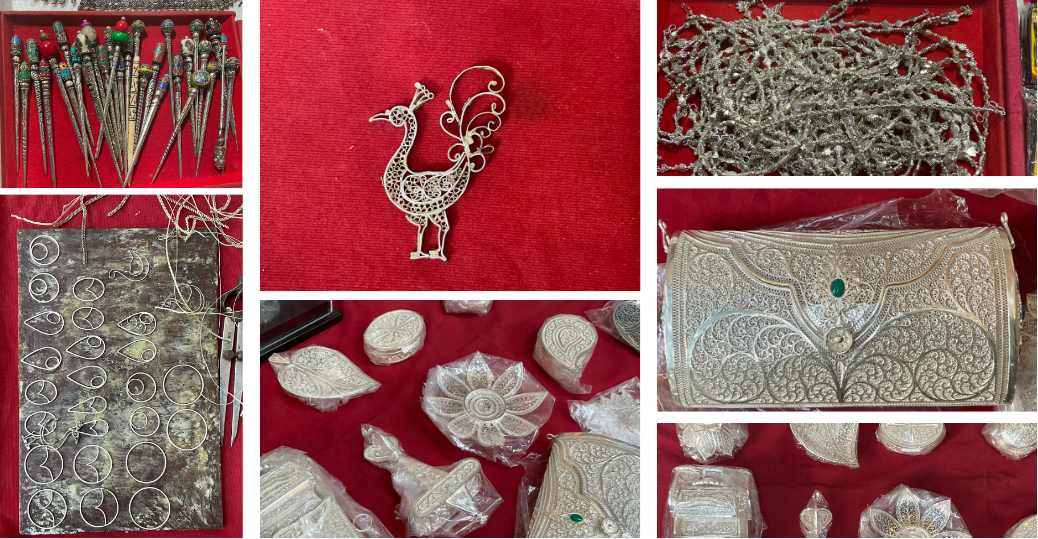Filigree & silverware
Silver metal

History
Filigree, one of the oldest metalworking techniques, originated over 5,000 years ago in Mesopotamia and flourished among Greek and Etruscan artisans before reaching India. Odisha, particularly Cuttack, became a prominent center of silver filigree, known as tarakasi. The craft thrived under Mughal, Kakatiya, and Vijayanagara patronage. In Andhra Pradesh, Karimnagar artisans practiced filigree since the 19th century.
Raw Materials and Tools
Filigree requires pure silver, occasionally mixed with copper, zinc, cadmium, and tin. Traditional tools include the Ghadia (earthenware melting pot), Bhati (furnace), dyes, hammers, pliers, rolling machines, and buffing tools. Chemical solutions such as borax, soap nut, and diluted sulfuric acid aid in refining and polishing. In Karimnagar, wire drawing machines convert silver bricks into fine threads, which artisans twist and mold into delicate patterns.
Process
Filigree involves melting silver, drawing it into fine wires, and twisting, plaiting, and soldering them into intricate patterns. Artisans sketch designs, mold silver wires accordingly, and fuse them with precision. Styles include rose work (floral motifs), siko work (structural frames), and jali work (lattice designs). In Karimnagar, melted silver is passed through wire-drawing machines, twisted, and soldered onto a sketched design, creating exquisite jewellery and décor.
Design and Color
Filigree designs range from floral and geometric motifs to intricate lattice patterns. In Odisha, tarakasi features delicate silver lacework, often resembling nature-inspired elements. Karimnagar filigree follows similar aesthetics, incorporating ornate arabesques and symmetrical patterns. While silver remains the primary color, oxidation, gold plating, and colored enamel are sometimes used for contrast.
Product Range
The craft extends beyond jewellery to decorative and functional objects. Traditional designs include necklaces, earrings, bangles, anklets, and waistbands. Silverware includes ritual lamps, temple idols, water containers, and ceremonial coins, along with home décor such as trays, boxes, and intricate figurines.
